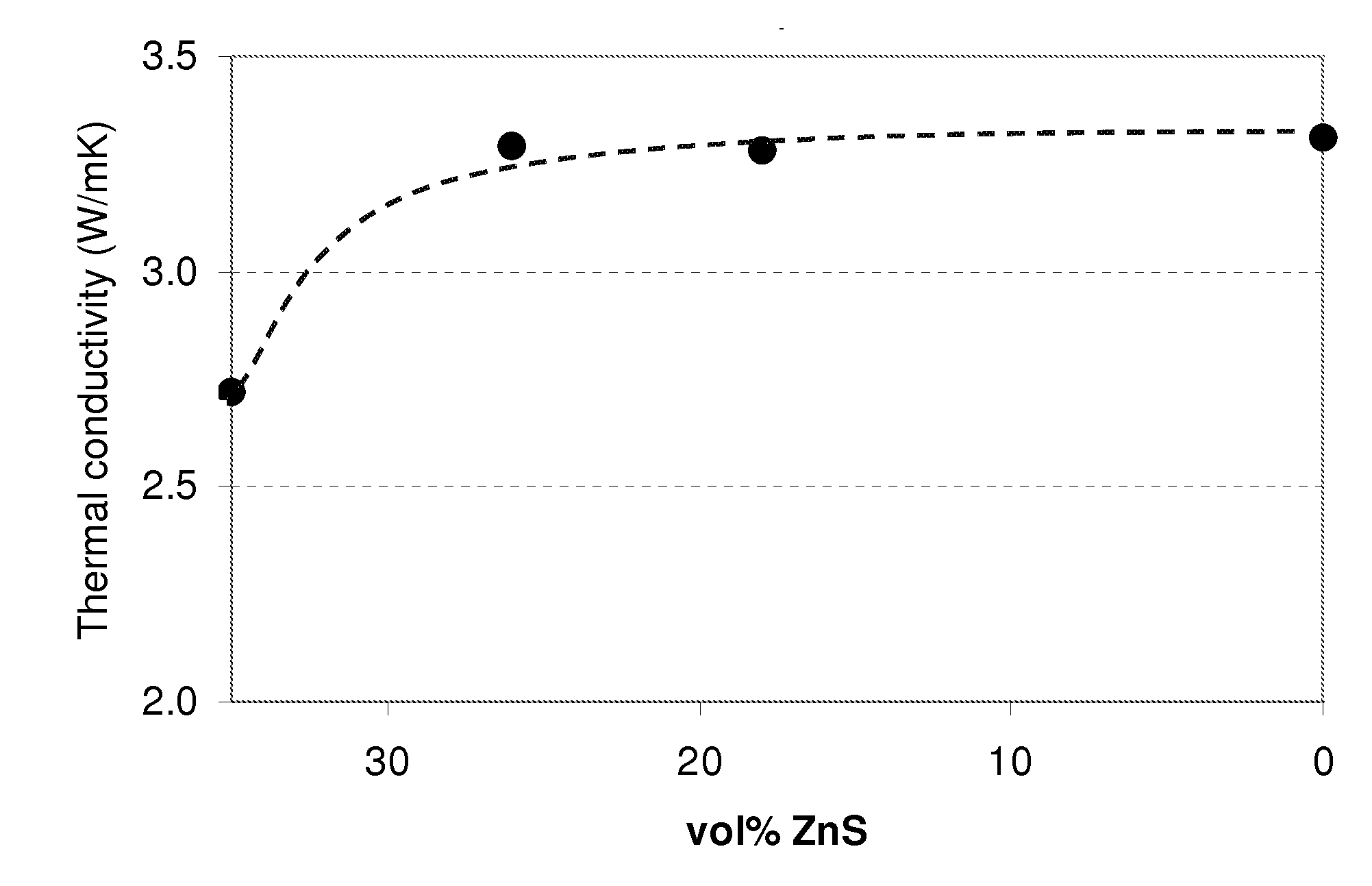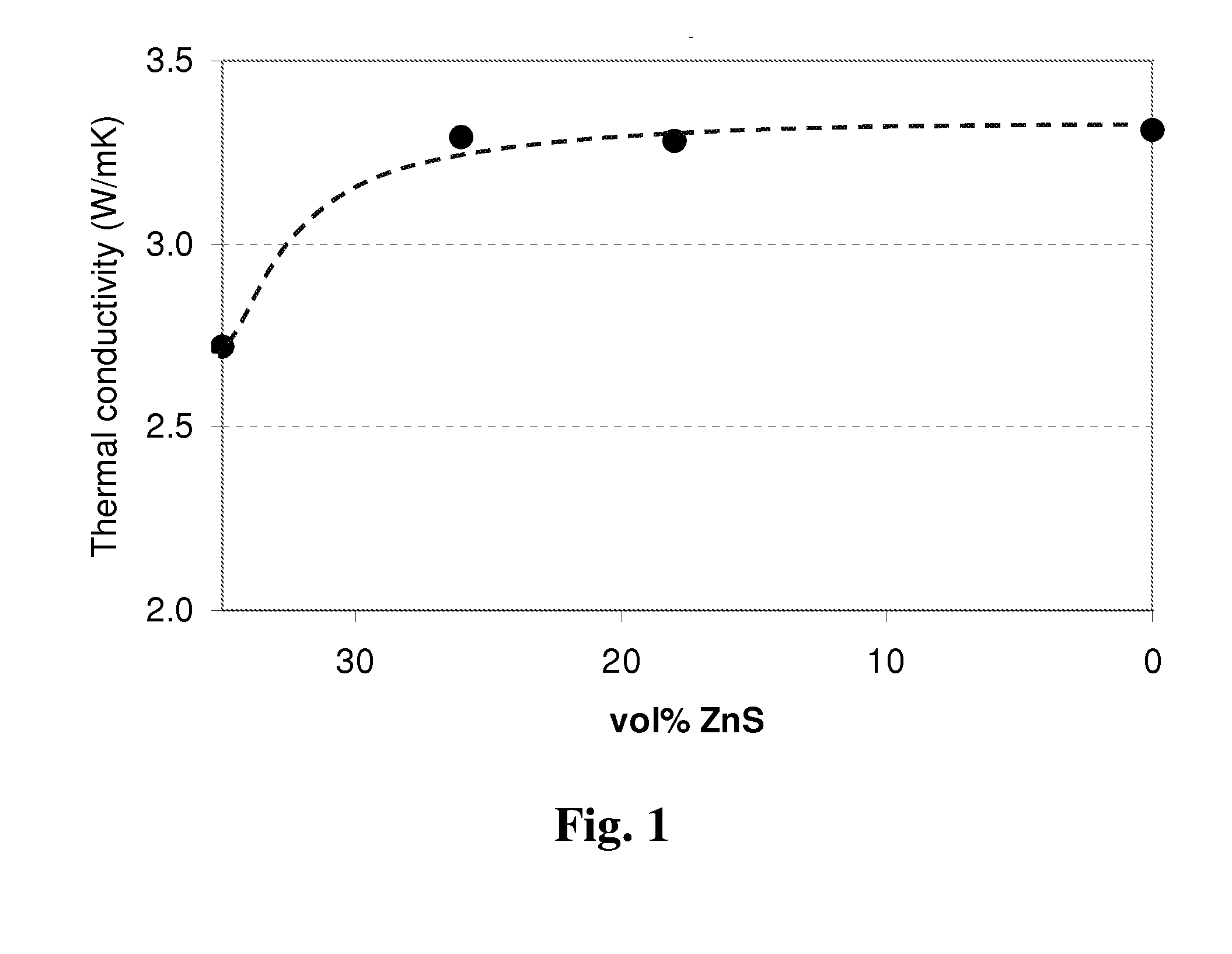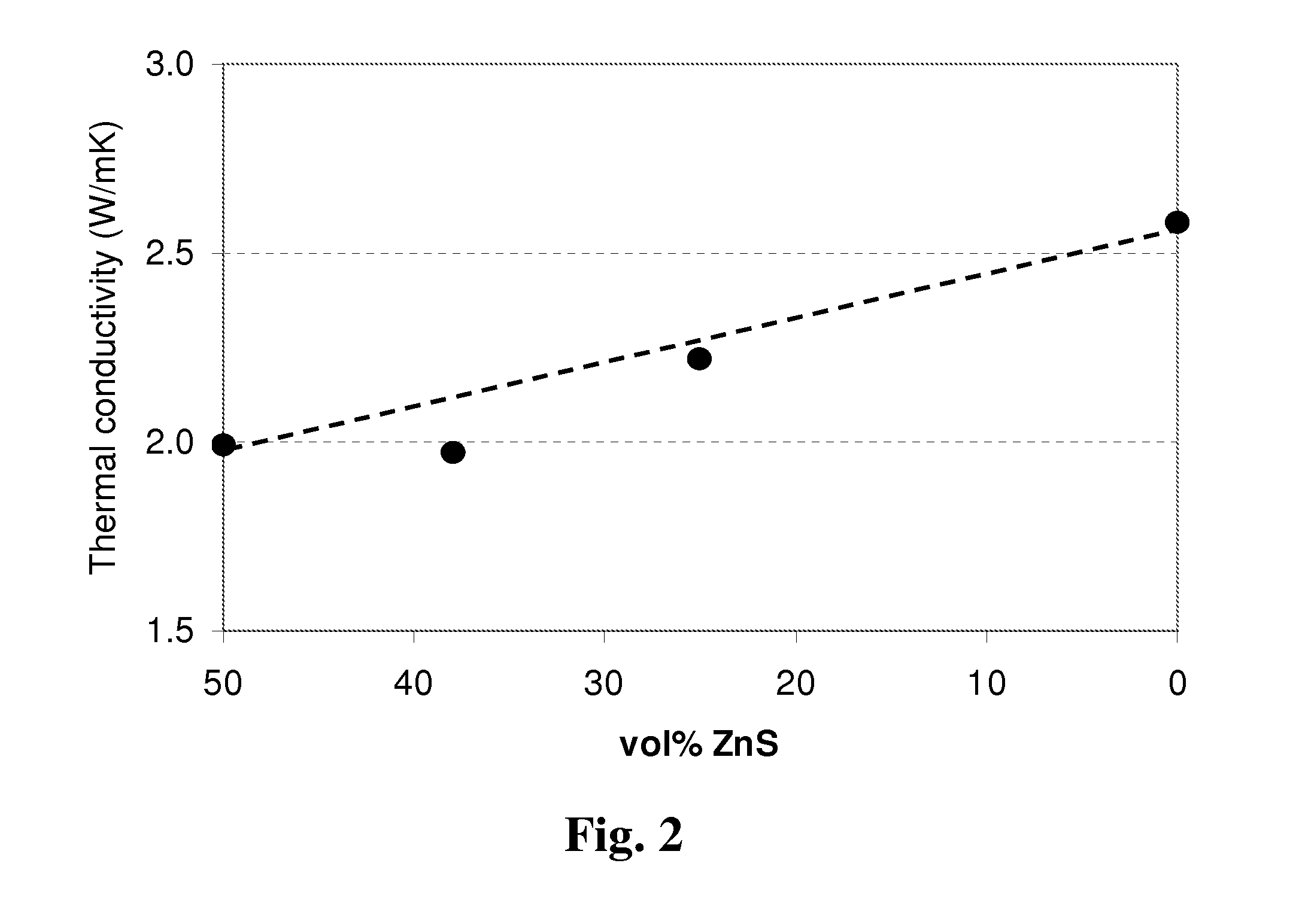Thermally conductive and electrically insulative polymer compositions containing a low thermally conductive filler and uses thereof
a technology of thermal insulation polymer and filler, which is applied in the direction of solid balls, semiconductor/solid-state device details, sport apparatus, etc., can solve the problems of high cost of ceramic filler, limited use of electrically conductive fillers in such applications, and limited number of ceramic filler types currently used for thermally conductive composites, etc., to achieve high thermal conductivity in polymer composites, high volume contents, and high thermal conductivity
- Summary
- Abstract
- Description
- Claims
- Application Information
AI Technical Summary
Benefits of technology
Problems solved by technology
Method used
Image
Examples
example 1
[0143]HDPE (Hostalen GC-7260, Basell), ZnS (Sachtolith (agglomerates of sub-μm particles), Sachtleben), BN (Coolflow CF300 (platelets / agglomerates, D50=15-25 μm), Momentive Performance Materials) and Graphite (Thermocarb TC300 (platelet with D90˜200 μm), Asbury Graphite) were formulated into a composition in the proportions set forth below in Table 1. The HDPE, ZnS, BN and Graphite were premixed in the solid state and were subsequently melt-compounded at 200° C. and 80 rpm on a Thermo Scientific Haake Polylab OS system equipped with a batch-mixer with Roller rotors, having a total internal volume of 65 cm3. The compositions were compression molded into 10×5×3 cm plaques by using a Dr Collin press at 240° C. and 100 bar. Cylindrical-shaped samples (3 mm thick, 12.7 mm diameter) were cut from the plaques and the through-plane thermal conductivity of the sample compositions was measured according to ASTM E1461. The results are set forth below in Table 1 and FIG. 1.
TABLE 1VolumeZnSBNGra...
example 3
[0149]Similar to the process of Example 1, HDPE (Hostalen GC-7260, Basell), TiO2 (Tiona RL-91 (agglomerates of sub-μm particles), Millennium), BN (Coolflow CF300 (platelets / agglomerates, D50=15-25 μm), Momentive Performance Materials) and Graphite (Thermocarb TC300 (platelet with D90˜200 μm), Asbury Graphite) were formulated into a composition in the proportions set forth below in Table 3 and the through-plane thermal conductivity of the sample compositions was measured according to ASTM E1461. The results are set forth in Table 3 and FIG. 3.
TABLE 3VolumeTiO2BNGraphiteTCResistivityRun #Polymer(vol %)(vol %)(vol %)(W / mK)(Ω· cm)9HDPE350152.57>10710HDPE269153.14>10711HDPE1818153.08>10712HDPE035153.31>107
[0150]Table 3 and FIG. 3 show the thermal conductivities of thermally conductive composites containing 15 vol % graphite and a total filler content of 50 vol %, where the TiO2 and BN volume contents vary. This means that the total volume content of filler is constant at 50 vol % and tha...
example 5
[0155]Similar to the process of Example 1, HDPE (Hostalen GC-7260, Basell), MgO (Maglite DE (agglomerates of sub-μm particles), Promecome), BN (Coolflow CF300 (platelets / agglomerates, D50=15-25 μm), Momentive Performance Materials) and Graphite (Thermocarb TC300 (platelet with D90˜200 μm), Asbury Graphite) were formulated into a composition in the proportions set forth below in Table 5 and the through-plane thermal conductivity of the sample compositions was measured according to ASTM E1461. The results are set forth in Table 5 and FIG. 5.
TABLE 5VolumeMgOBNGraphiteTCResistivityRun #Polymer(vol %)(vol %)(vol %)(W / mK)(Ω· cm)17HDPE350152.64>10718HDPE269153.29>10719HDPE1818153.28>10720HDPE035153.31>107
[0156]Table 5 and FIG. 5 show the thermal conductivities of thermally conductive composites containing 15 vol % graphite and a total filler content of 50 vol %, where the MgO and BN volume contents vary. This means that the total volume content of filler is constant at 50 vol % and that th...
PUM
| Property | Measurement | Unit |
|---|---|---|
| vol % | aaaaa | aaaaa |
| volume resistivity | aaaaa | aaaaa |
| thicknesses | aaaaa | aaaaa |
Abstract
Description
Claims
Application Information
 Login to View More
Login to View More - R&D
- Intellectual Property
- Life Sciences
- Materials
- Tech Scout
- Unparalleled Data Quality
- Higher Quality Content
- 60% Fewer Hallucinations
Browse by: Latest US Patents, China's latest patents, Technical Efficacy Thesaurus, Application Domain, Technology Topic, Popular Technical Reports.
© 2025 PatSnap. All rights reserved.Legal|Privacy policy|Modern Slavery Act Transparency Statement|Sitemap|About US| Contact US: help@patsnap.com



